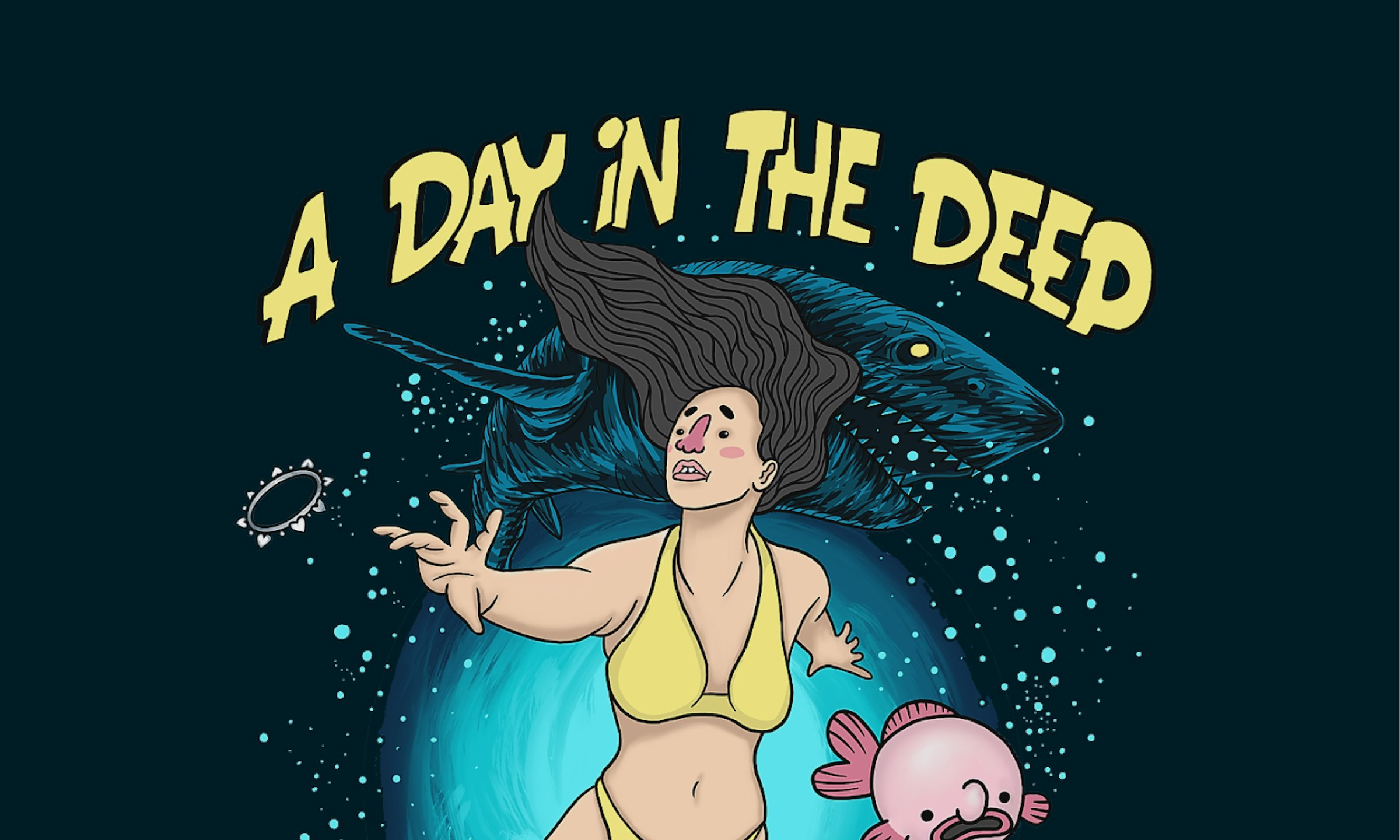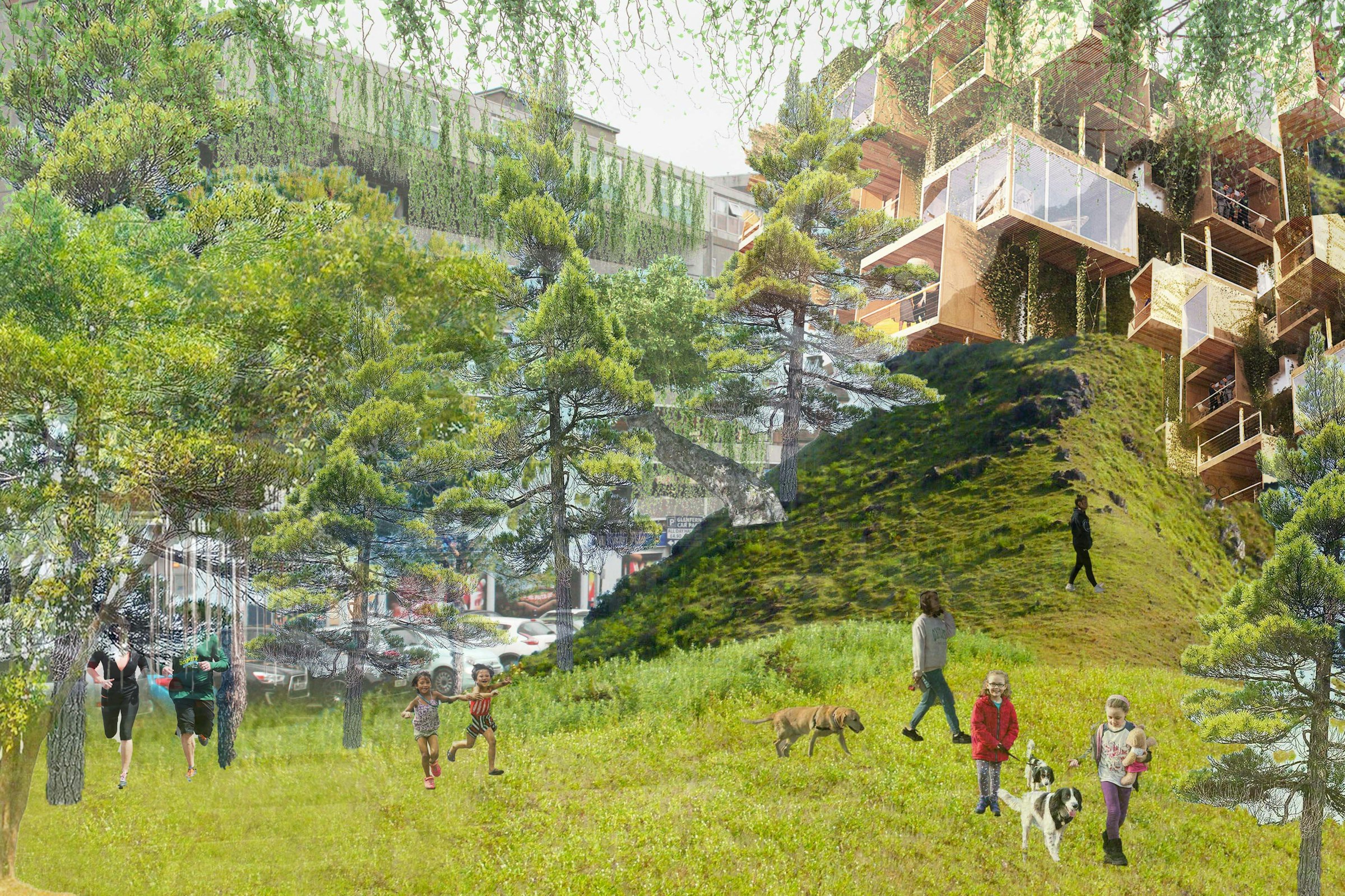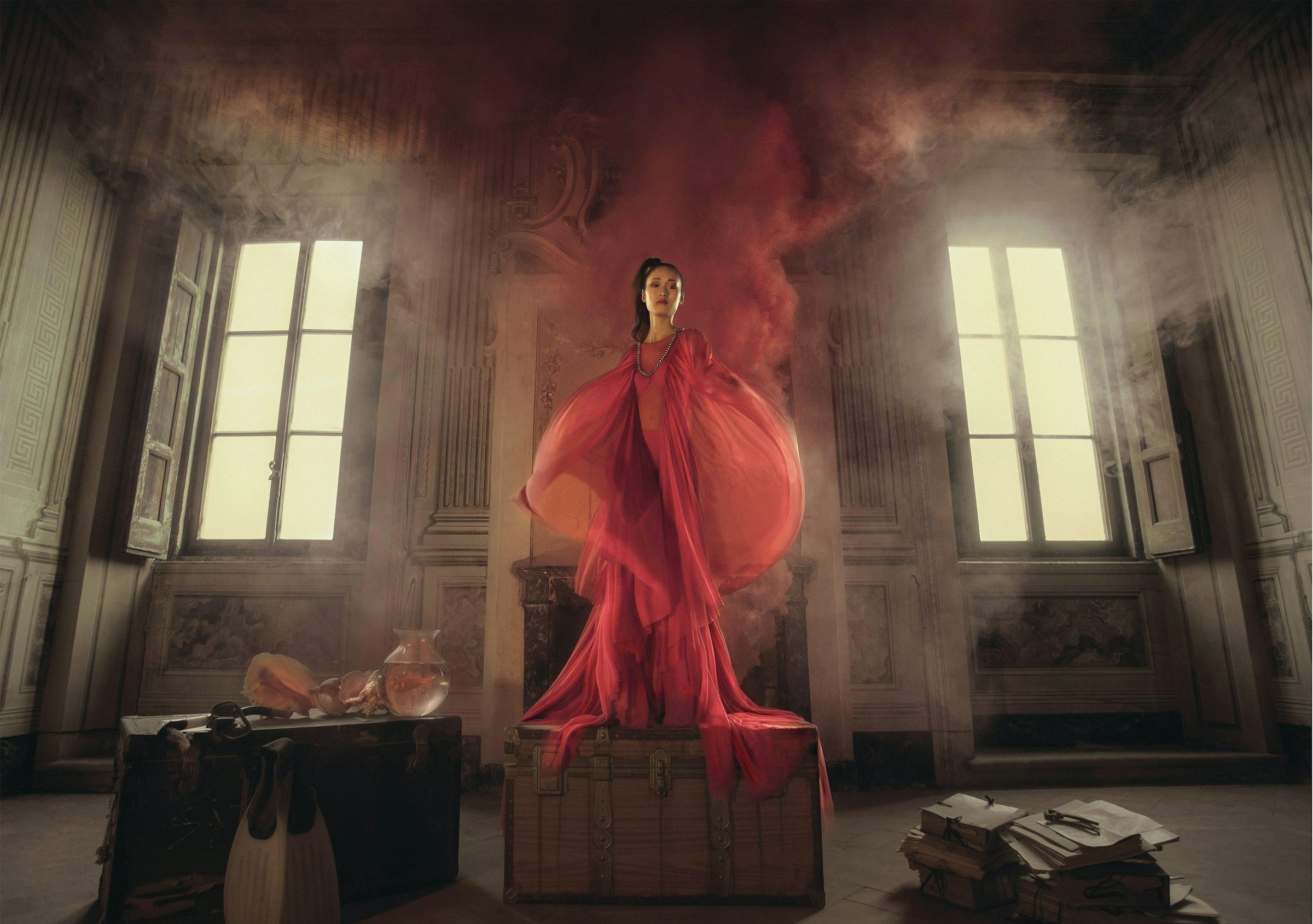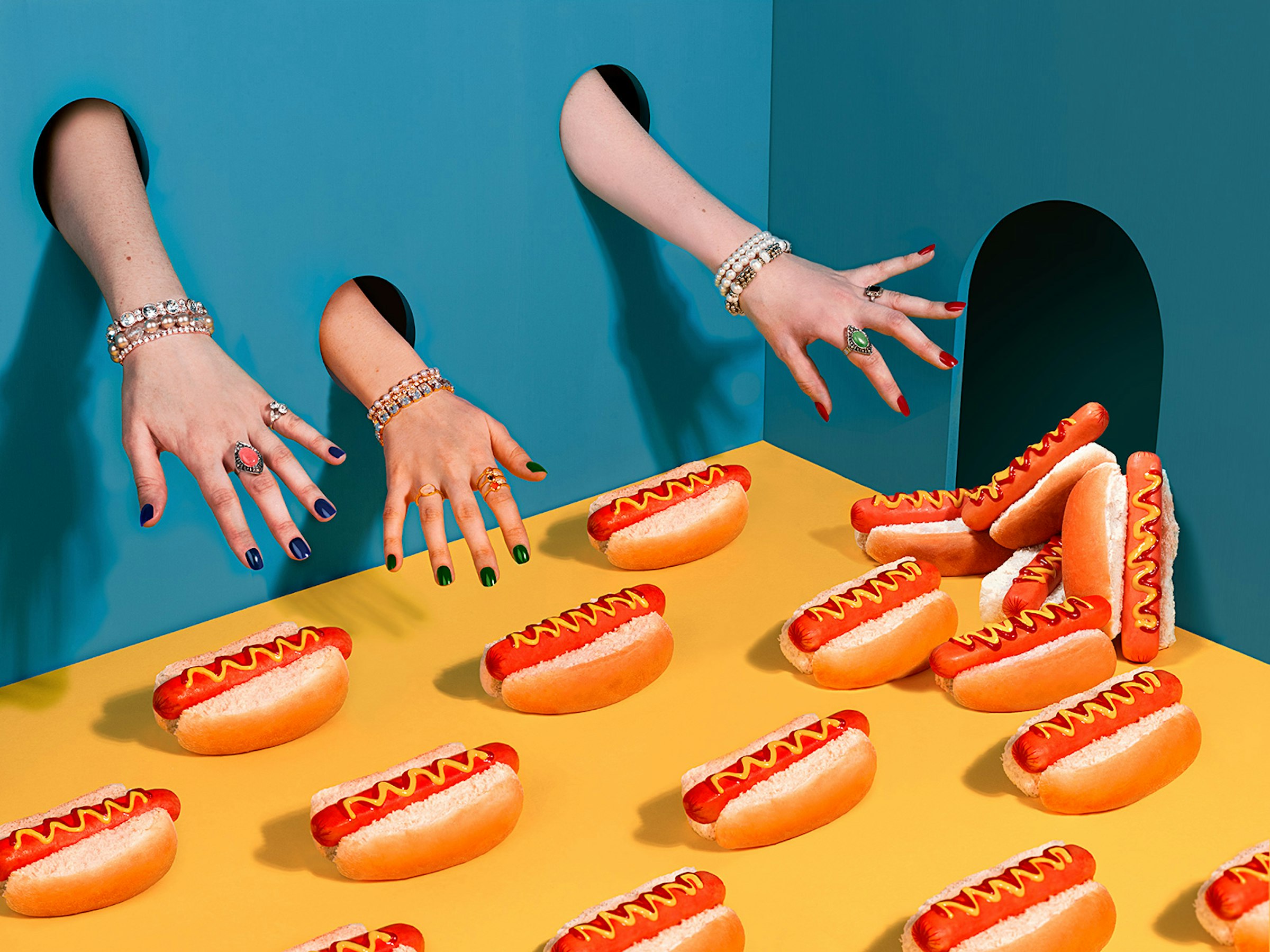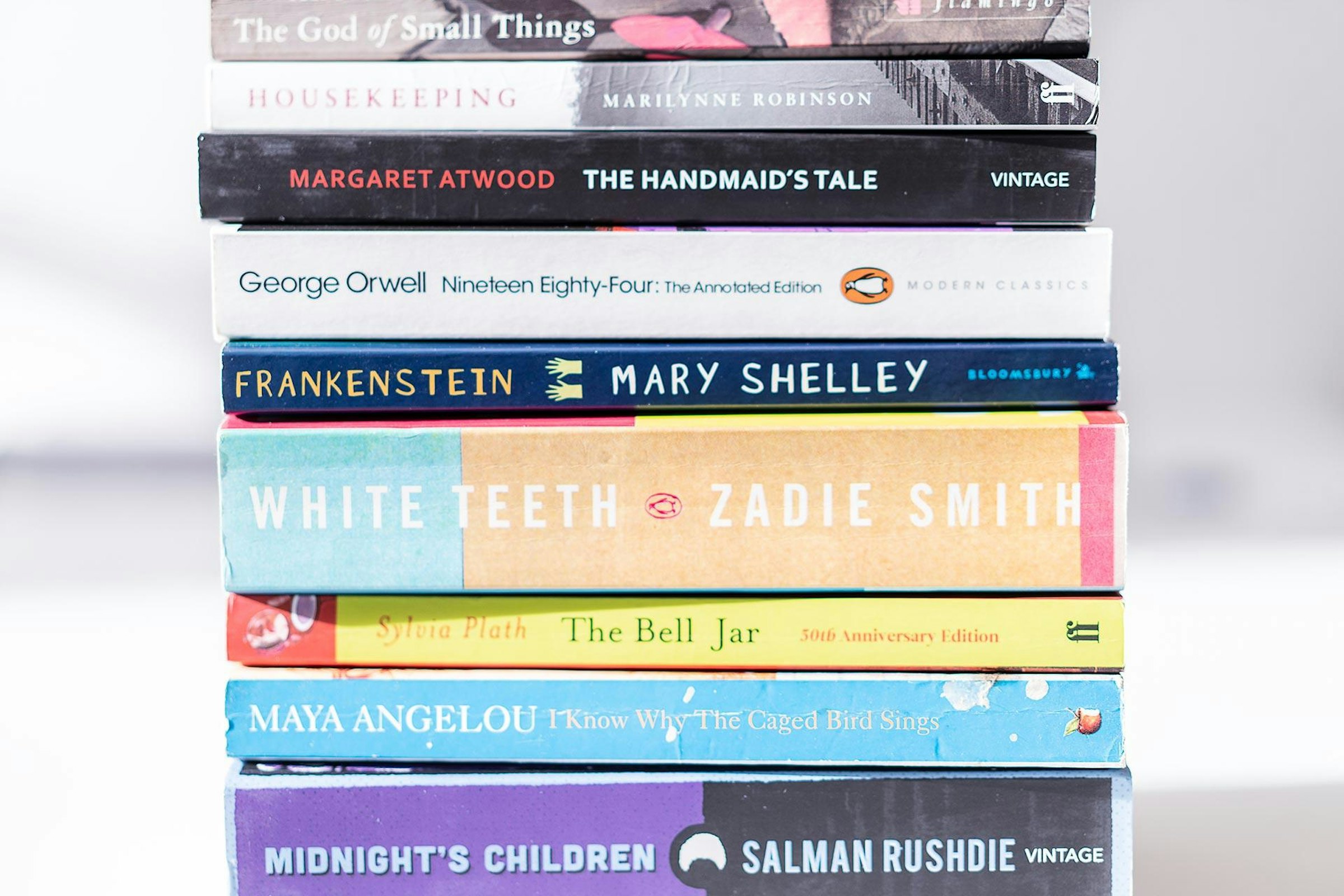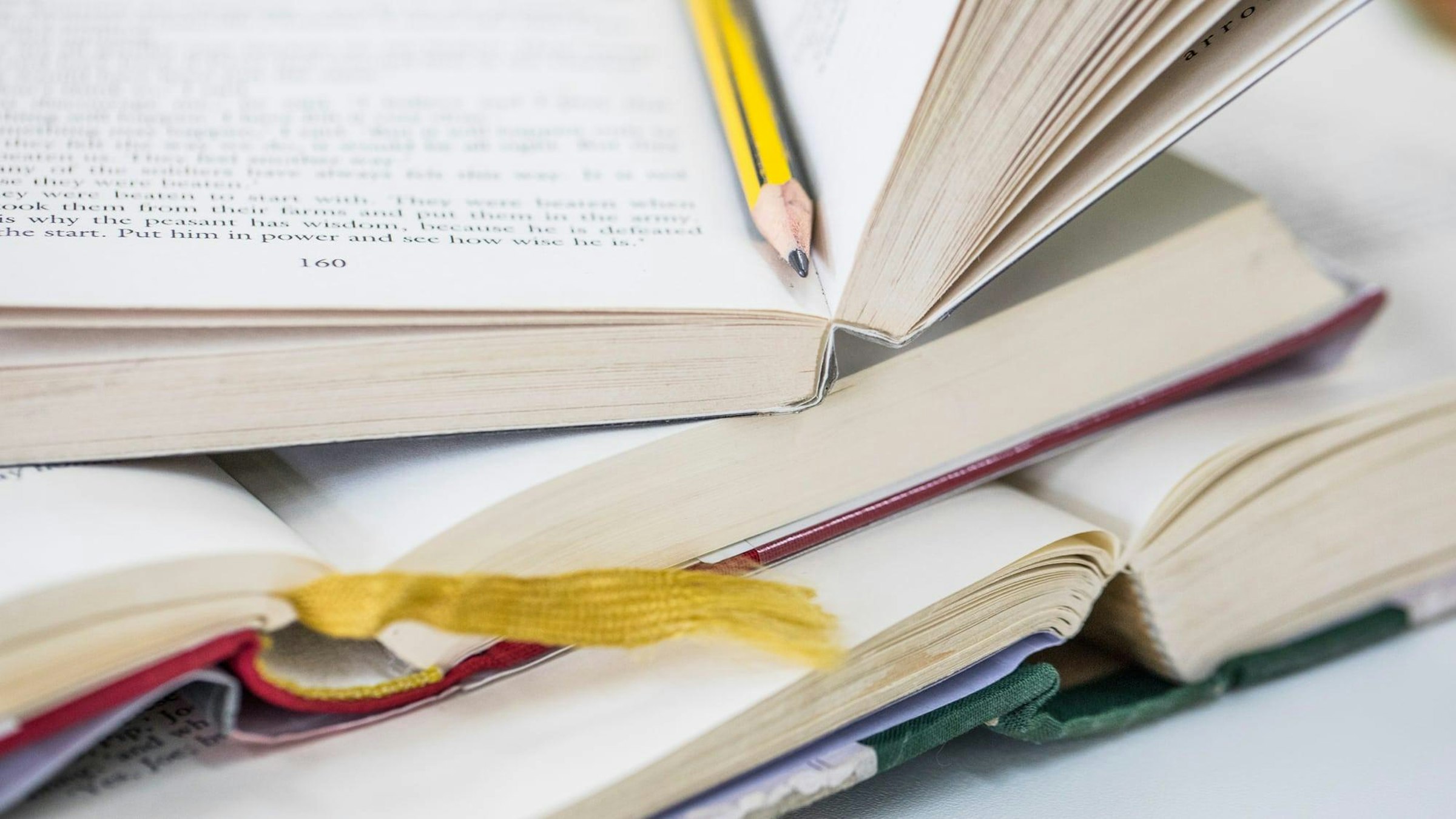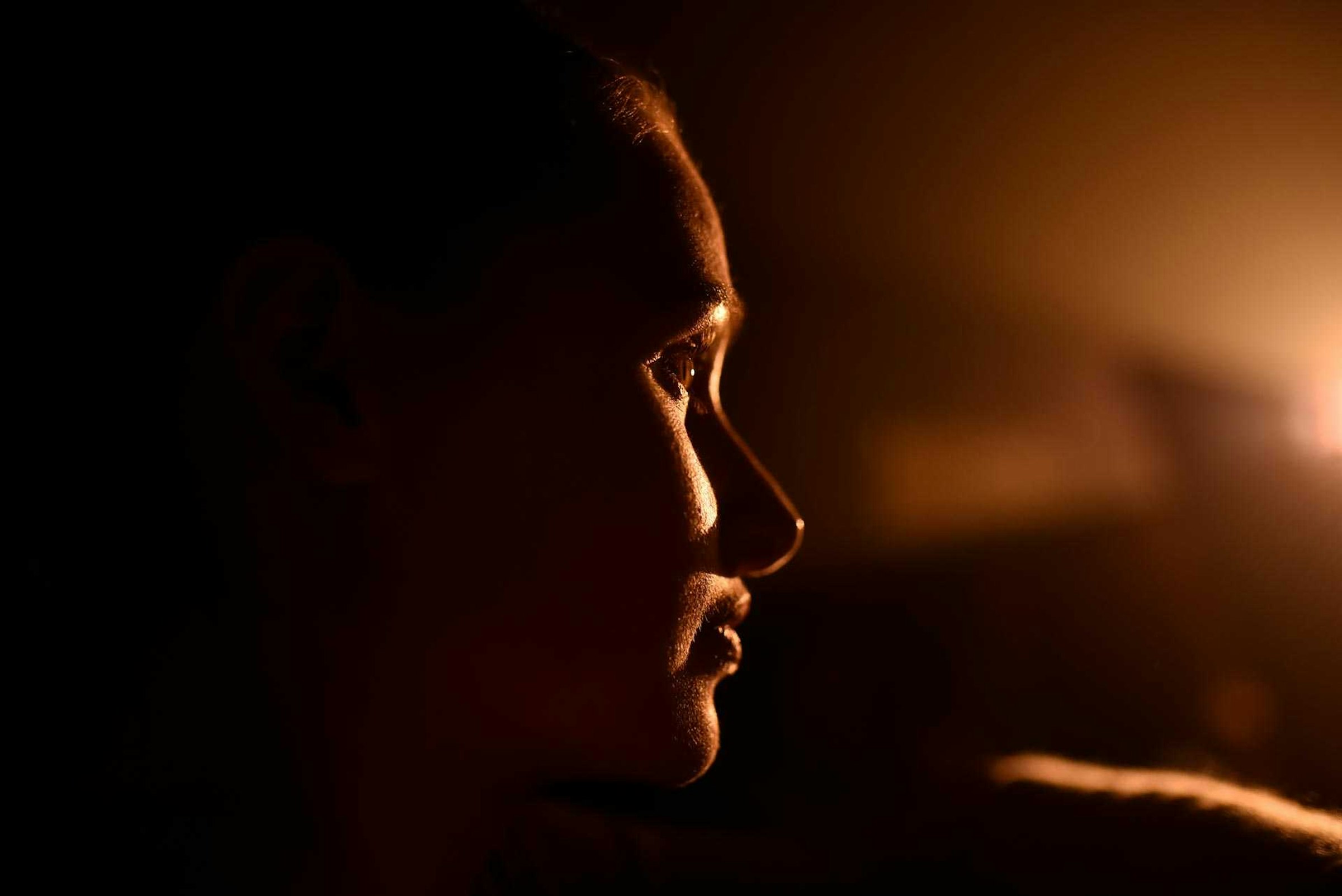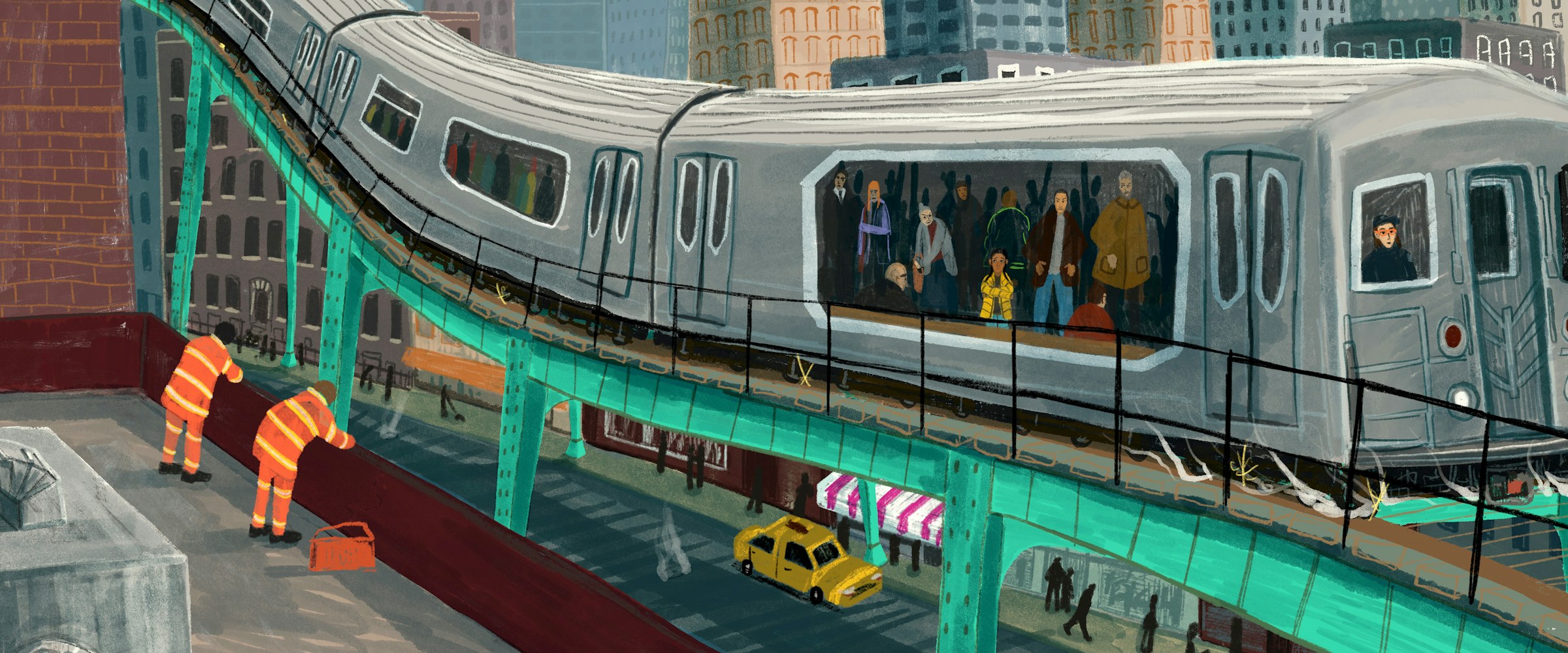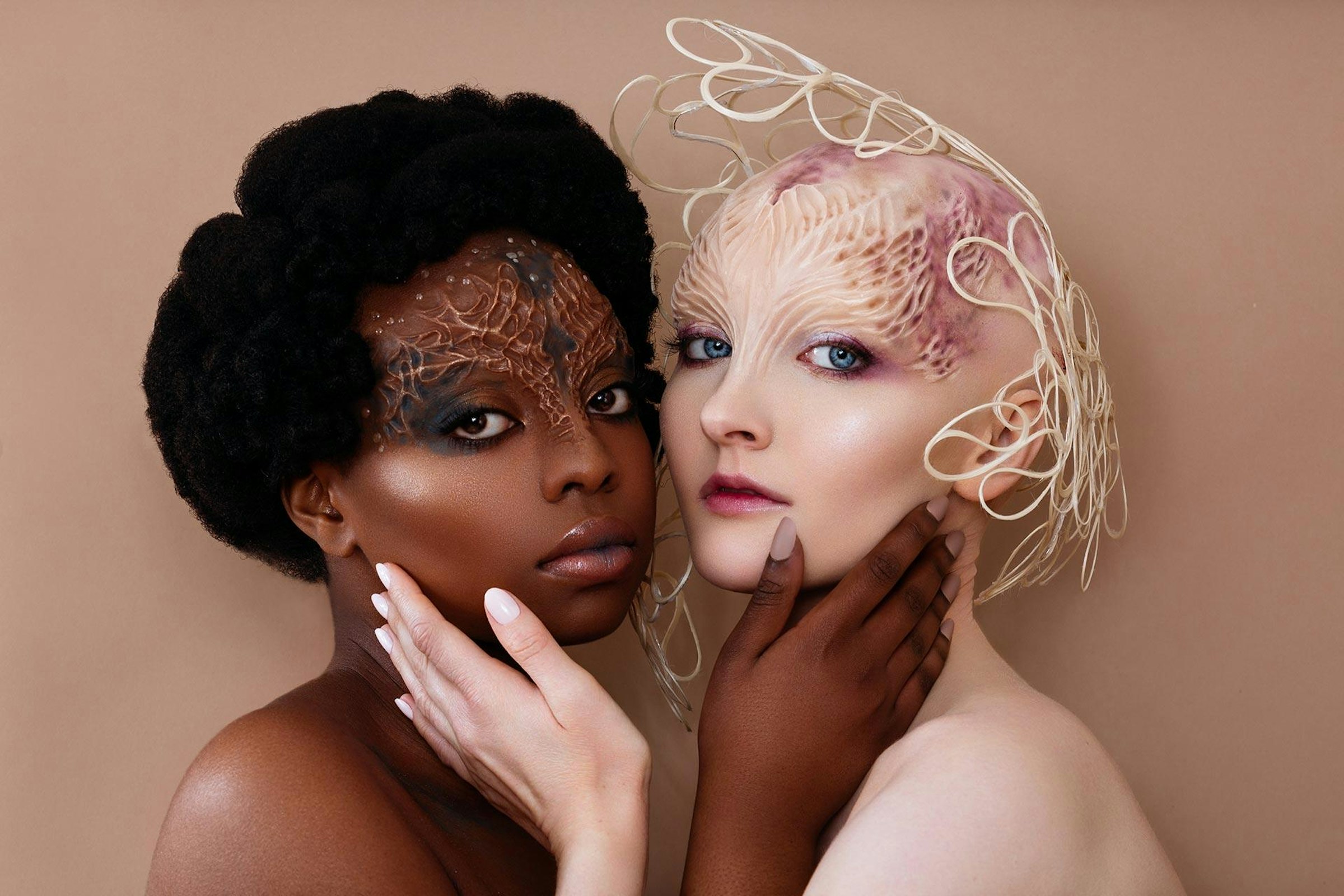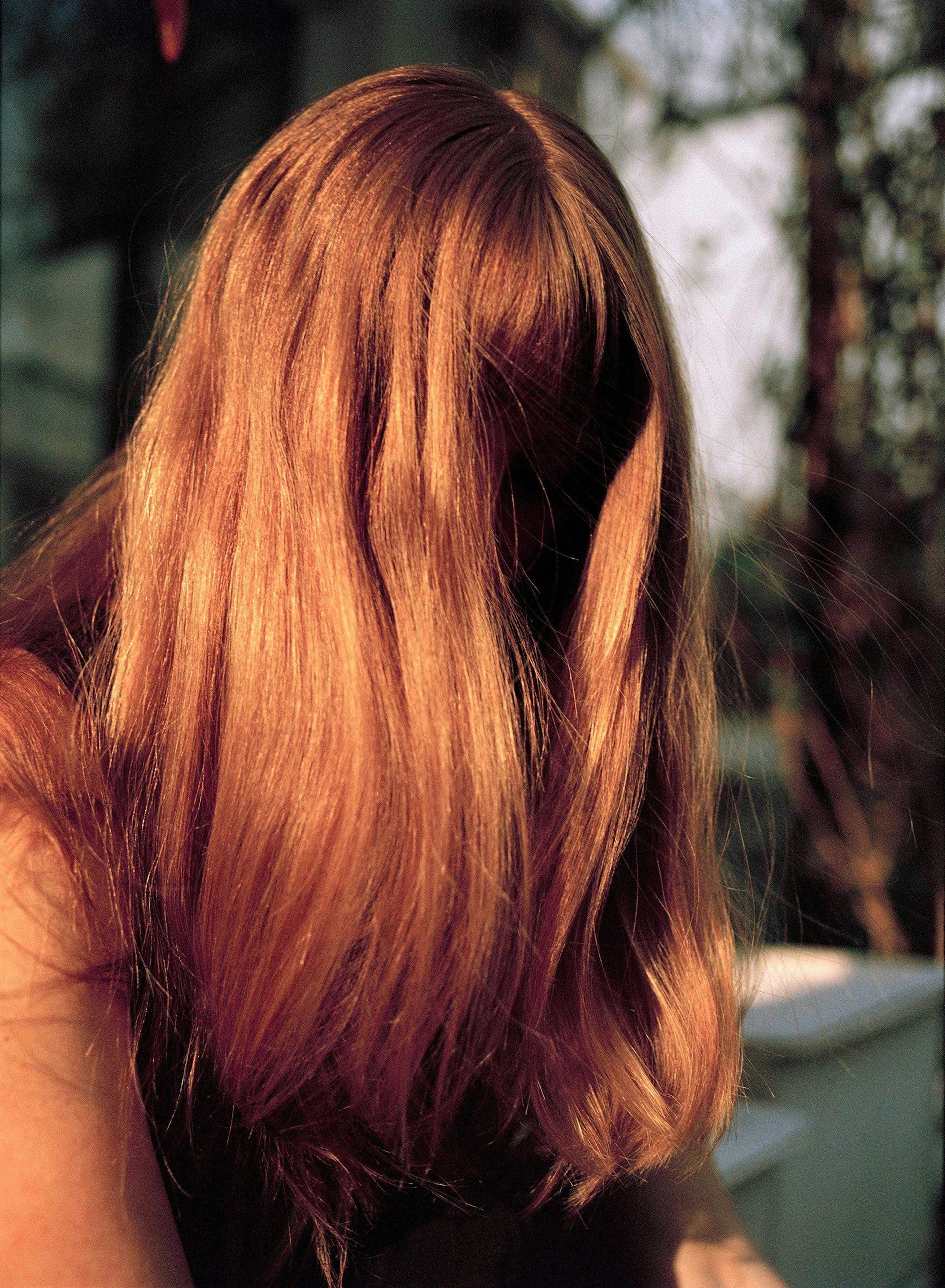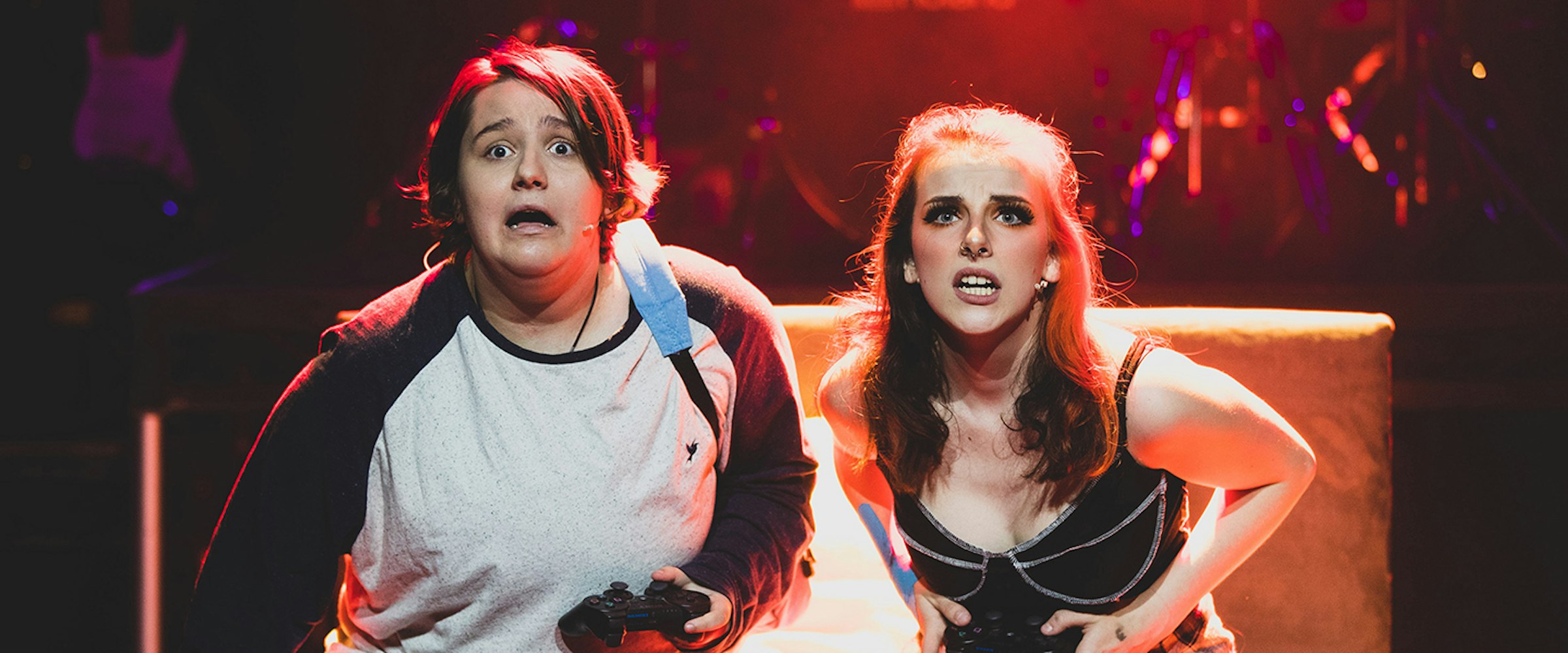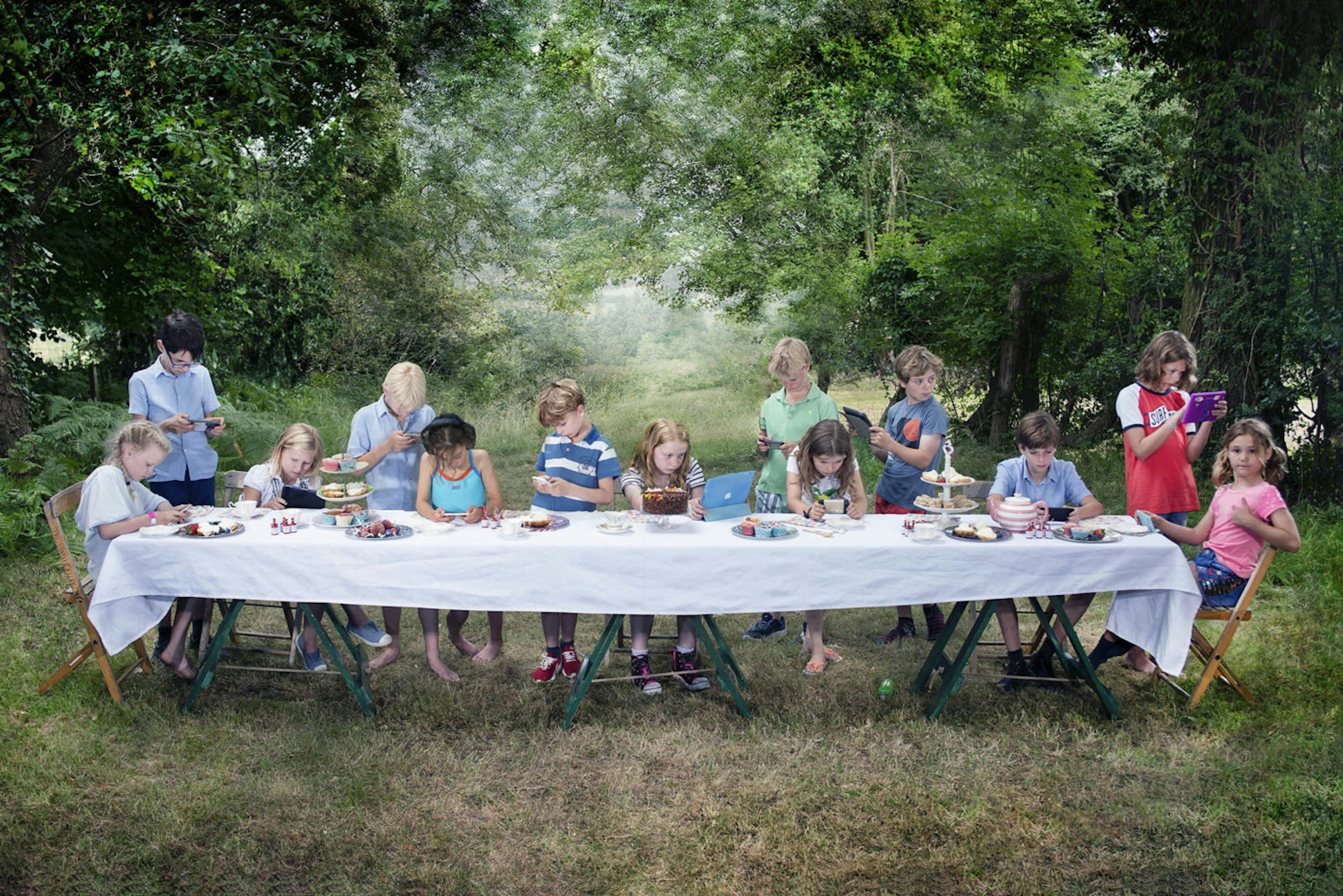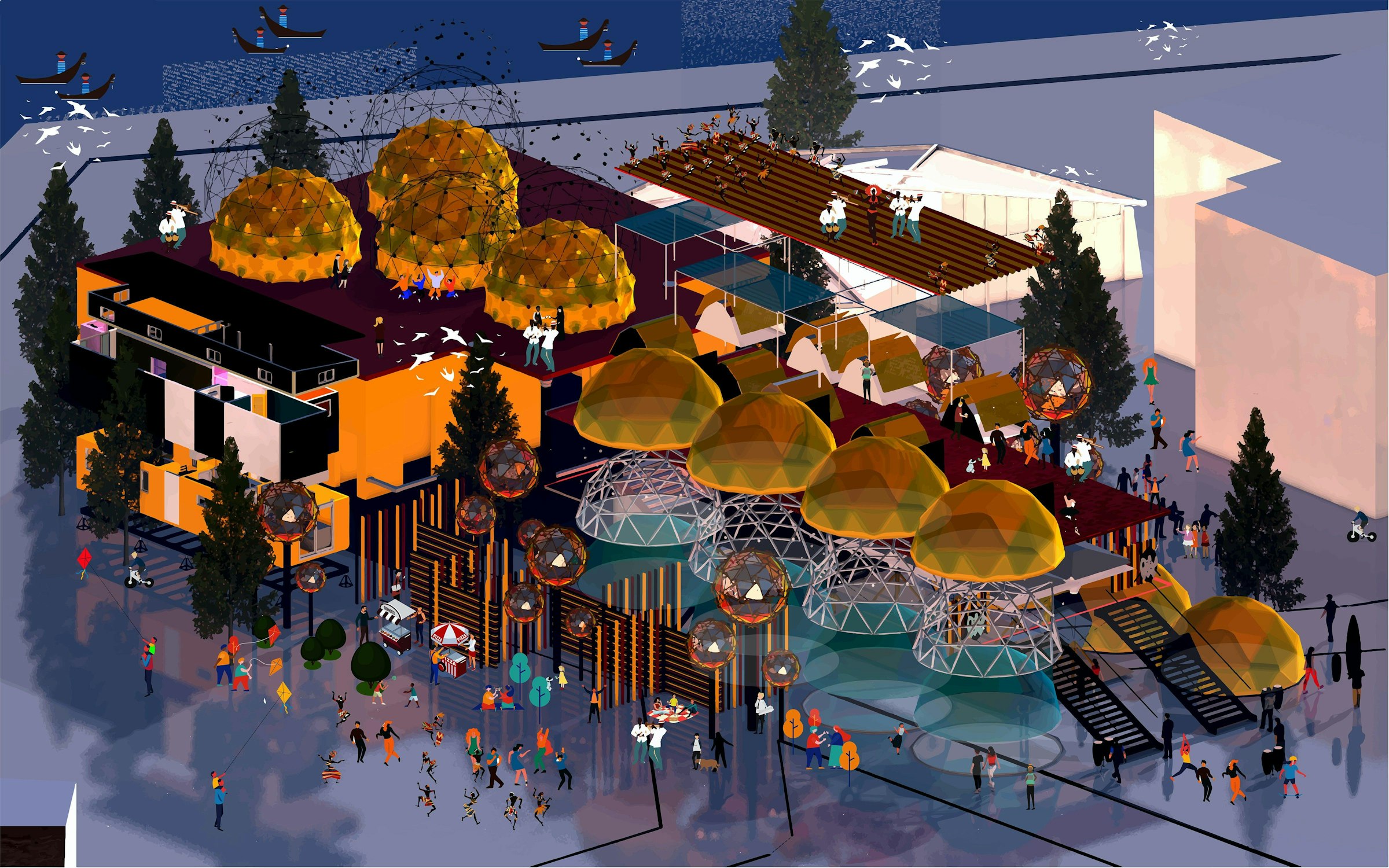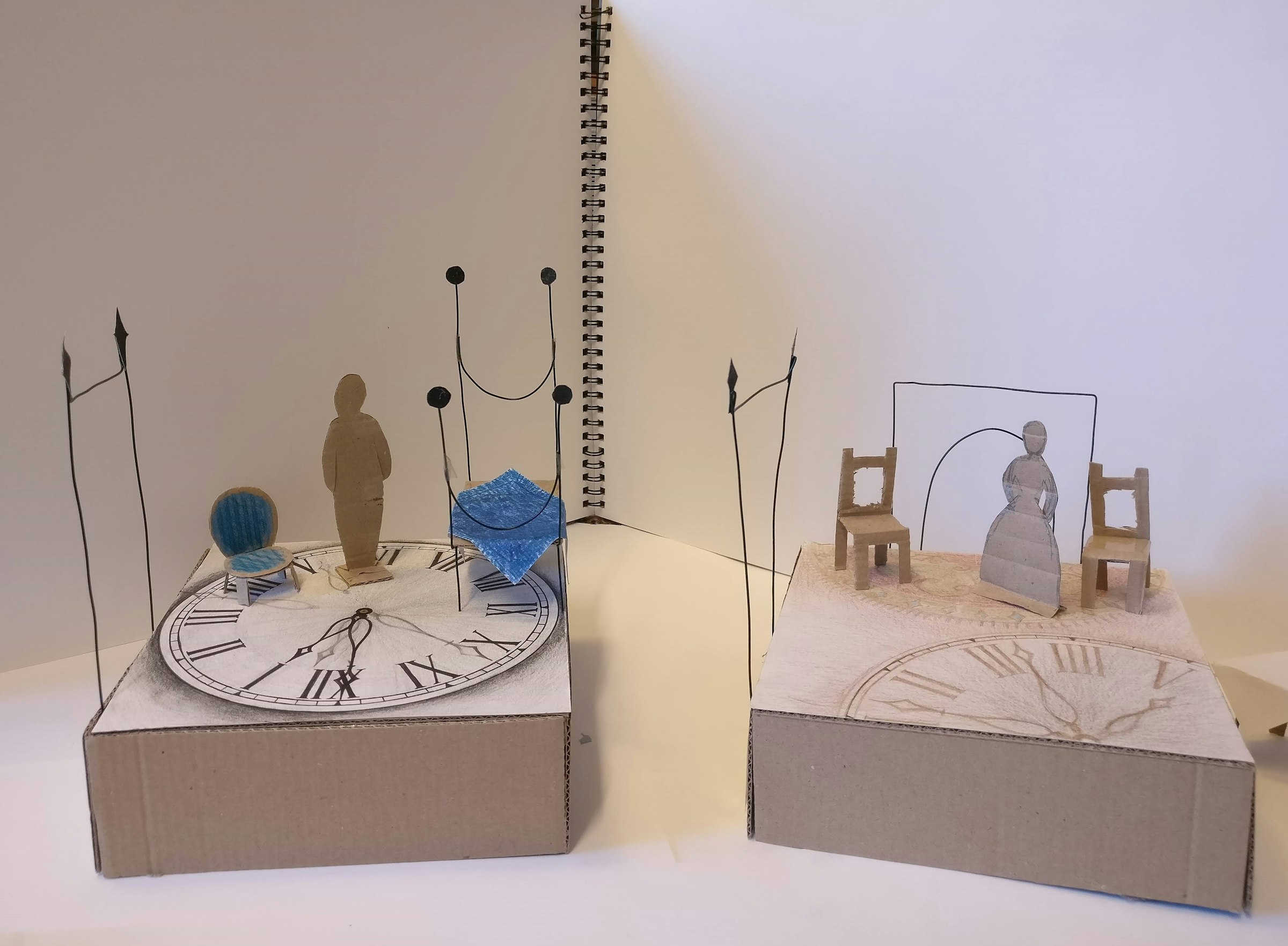- Home
- Latest
- Student Stories
- Heidi McEvoy-Swift — How to stage A Chri...
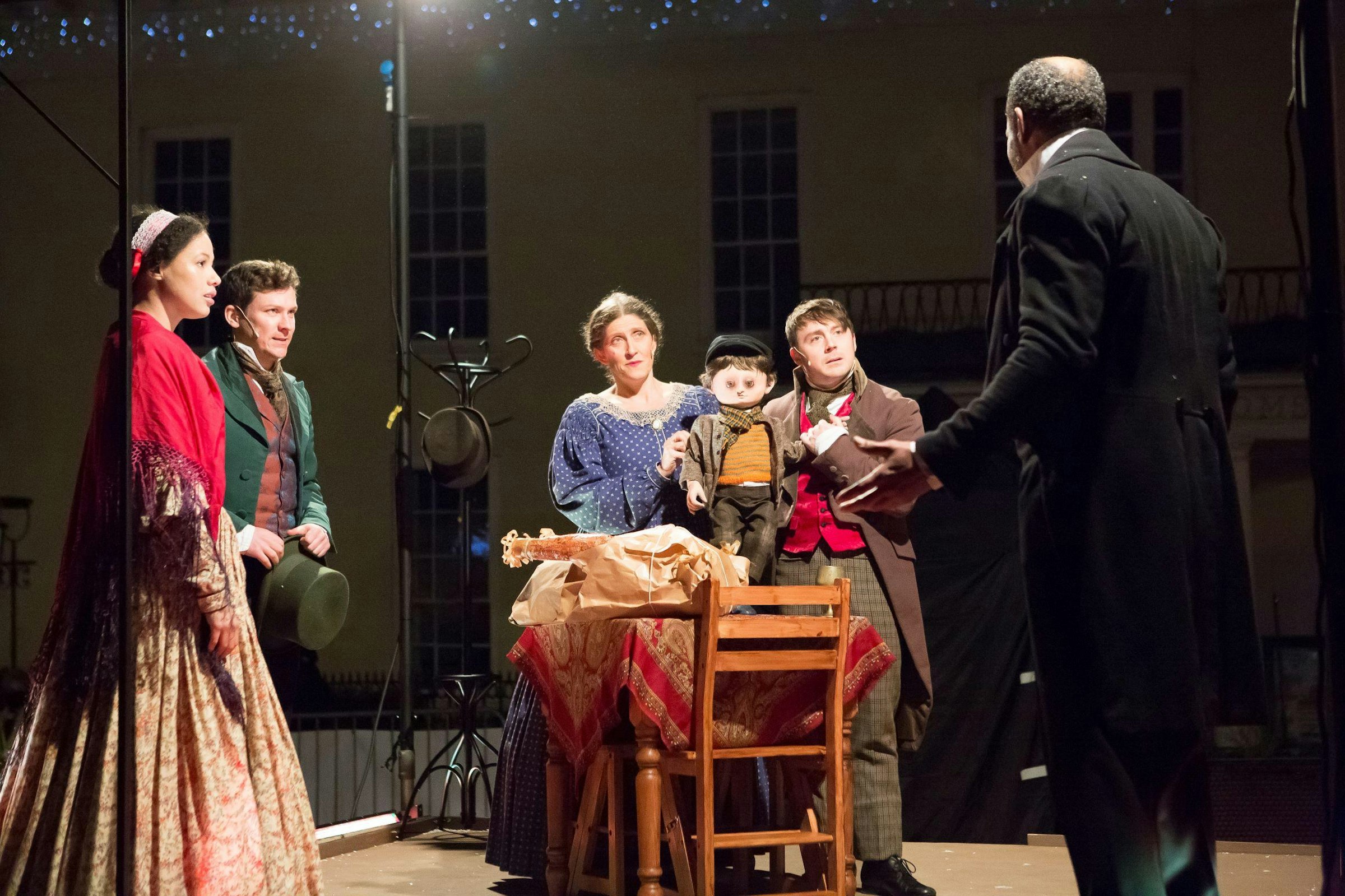
For 10 years, I worked at Theatre Royal, Bury St Edmunds. On 17 March 2020, we were just about to go into tech with the Youth Company’s production of the Charles Dickens favourite Oliver Twist. I was designer and costume supervisor. 10 of the cast had fittings that afternoon, and I was dashing around searching for the box of cravats and suitable boots in size 7, when the whole staff were called to an extraordinary meeting.
That day our show was cancelled.
All non-essential staff (including me) were sent home. Within a week the whole spring season was cancelled, and all but four core staff put on the then unheard-of scheme – furlough. By mid-August, the autumn season and crucially, the pantomime Cinderella, was cancelled, and a large proportion of staff (including me) made redundant. This is the truth of theatre in a global pandemic.
I turned to education, and in mid-October headed down to Arts University Bournemouth to study for the MA in Historical Costume.
Later that week, out of the blue, I received a very welcome phone call from Owen Calvert-Lyons, Creative Director of Theatre Royal, inviting me to be the freelance designer of his new production, Dickens’ A Christmas Carol! With no way of putting on a viable panto safely in Theatre Royal’s 200-year-old 350-seater auditorium, Owen had come up with the idea of producing an outdoor production for the town. With links to Charles Dickens, who wrote some of The Pickwick Papers at the Angel Hotel and visited the Athenaeum, this was the perfect location.
It had already been decided that two 3 m x 3 m stages would be used, with additional playing space between them on Angel Hill, and I was asked to work on a simple set and costume design factoring in the unusual requirement to construct and deconstruct the stages every day as the council were only releasing the parking spaces to us from 3pm daily. The only brief from Owen was that it must be simple and ‘traditional’ by being set securely in the 1840s.
First considerations had to be about the ease and speed of setting up and taking down the stages. That the piece was to be performed in the round was another factor. No pieces of set could impede the view for the audience. With such small stages, and up to five people in the space at times, furniture and props had to be minimal. An interesting design challenge to say the least!
I divided Scrooge’s environments - his counting house and living rooms - onto one stage, and all the other homes onto the other. This allowed me to offset a cold austerity for Scrooge’s environment against the warm homeliness of the others. With our limitations, I first planned to design the floor and sides of the stages only as illustrative flats using imagery of timepieces, Christmas, and elements from the script – whilst avoiding the inevitable but unwanted steampunk effect of clocks and Victoriana. Deciding on a hearth for the various homes and a bed for Scrooge’s room, I doodled around various ideas, eventually taking illustrations off the sides of the stage, moving the lines up into the empty space above, creating actual set pieces coming off the sides. As I sketched the black lines of clock fingers for doorways, I could see that making them in wrought iron would keep the openness of the stage in the round yet also give a real sense of place. Working up the sketches into wire led me to eliminate most of the illustration except for the floors, though these were also discarded later, in favour of the pure simplicity of line. I was anxious that this was too pared back, but as it happens, the production manager told me there was no budget for set a painter. Sometimes bold decisions are made easy!
On such a simple set, costume needs to work hard in establishing time and place, and also provide colour and texture. Designing with 1840s costume is relatively straightforward in itself, especially as these were to be hired, so storyboarding was the best method for achieving the different styles required. While Scrooge is Scrooge throughout, all twelve remaining characters are played by just four actors. Costuming had to take into account not only the different characters played by each person, but the limitations of the outdoor staging, and lack of wings in which to change. Additionally, Tiny Tim was a puppet, and our Ghost of Christmas Future would stand eight feet tall on stilts - a terrifying ‘Dementor-like’ creature, according to our director’s brief. By breaking down the script, each actor could have a base costume for their most significant character in the story which allowed them to play their other roles in the same trousers, shoes, and shirt at the very least!
1840s womenswear proved tricky. With no opportunity for changes, quick or not, the choice was for generic separates with partial changes, or one statement garment to overdress. I opted for dresses, which could define the era more clearly than separates. This meant good outerwear for the first scene, then a series of tweaks for one of the actresses: the addition of an over-apron and mob cap to play the child Martha, the dress itself for Belle, and simply a shawl for Alice. The weather often turned out freezing, so the outerwear and the shawl were all important!
Since the ghosts were to be specific to our show, I wanted to make these special, while still fulfilling the director’s brief. The ghost of Christmas Past was a joy to design for. Ours was a commanding, funny, and sleazy woman, the daughter of a pickpocket. This, along with the time element, allowed me to play with lots of watches, jewels, and handkerchiefs that might have been picked from pockets. John Leech’s ubiquitous illustrations from the original books influenced me to design a mostly dateless but slightly Victorian green coat, worn over a possibly Miss Haversham-like faded white dress, with a masculine top hat and a hint of Christmas in the holly trim, all to overdress Mrs Cratchit!
The Ghost of Christmas Present proved an interesting challenge. Originally, he was written as an athlete, jogging around in some kind of Victorian running garb, and would age and become more decrepit throughout the scene through a change of actor. Unfortunately, this character became a casualty of the trouser situation; it was impossible to get both actors out of and back into trousers, onstage, double quick. We eventually opted for this ghost to be a jolly lamplighter, so we could maintain the speed of action, the characterisation of the cockney chap, and the aging process, while keeping the actors in their base costumes. Matching (but aged) reefer jackets, scarves, and caps transformed our Edward and Bob into the young, then old, cheeky ghost. For Jacob Marley, the overriding limitation for me was again overdressing and speed of turnaround. Keeping it simple, I put Marley in an aged, cobwebbed overcoat and era-appropriate top hat, adding lightweight chains but leaving out the ledgers and money boxes Dickens describes.
With the designs agreed, I switched into my parallel role of costume supervisor to get the garments in place. Generally, this is a separate role to that of designer, but sometimes the two come together in smaller theatres, or when budgets are tight (due to COVID). Combining the two roles gave me a much greater degree of control as designer, but also a great deal more work. Firstly, delving into our own store proved disappointing. Wrong sizes, wrong condition, wrong era, etc. Hiring costume is usually very straightforward, however with most theatres closed, many hire stores were also closed, severely limiting choice. Fortunately, Bristol Costume services were still open, as they service film studios on the same site. Normally, I would go to the store, choose the costumes, and maybe even bring them away with me directly. Under the new safety restrictions however, I wasn’t allowed to go to the store and relied on the Bristol staff choosing suitable costume for me from my designs and instructions. Having used this store often in the past, I have come to know and trust the staff. On the whole, the costumes that arrived for the first day of rehearsal were pretty close to what I wanted, and despite some fitting issues, most of the basic costume was hired from Bristol.
Alongside being costume supervisor for Theatre Royal, I was also their main costume maker, but the workload meant I needed to bring in another freelance maker for the two bespoke ghost costumes. Engaging my preferred maker was easy compared to getting materials; with the November lockdown, all ‘non-essential’ shops were shut, and I had to order fabrics online then arrange for them to be delivered to Cambridgeshire. Fabric weight, quality, and colour are very difficult to judge online, so what arrived was somewhat surprising, but luckily much nicer than I could have hoped! During this time, production meetings were a fascinating mix of spectacularly un-theatrical issues relating to COVID and health and safety. From cones in the carpark, masks for crew, selling tickets to ‘bubbles’, and sanitising headsets, everything related to getting a live audience into a public space for a show was ‘unprecedented’, and a massive task for the skeleton staff still at the theatre.
Rehearsals began on Monday 23rd November, and it was just wonderful being back in the theatre and with the team, meeting a new cast. All the buzz of the first day felt slightly weird in masks. Both portable stages were set up on the theatre’s stage, and it was really exciting to see the iron work in place, I was so pleased with it! Conducting fittings in a pandemic is yet another unusual situation to be in. Masked and gloved, I could only point to the clothes the actors were to put on themselves as best they could, before I could go fasten, pin, and fit, in as brief a time as possible. Any costume we rejected had to be put in a separate dressing room and left to hang for two days before being handled again. Our cast formed a working bubble so were allowed to be unmasked together, but in the dressing room we all wore them, making it strangely impersonal.
Over two weeks of intense rehearsal for the cast, I altered, repaired, and smartened up the hires, sourced missing garments and footwear, made a bonnet or two, and worked with the costume maker to complete the ghosts. Marley’s chains all needed to be stitched onto the coat and scarf he was putting on as a quick change over his Bob costume. This coat and hat also had to be broken down, made shabby, cobwebby and ghostlike. All this is the work the costume supervisor does right up to opening night, so I did.
After a freezing tech week of long evenings worrying about the way the lighting affected the aesthetic, whether the quick changes would be quick enough, and whether the multiple layers of thermal wear were sufficient for the cast (or visible!), there was no more for me to do. We opened on Friday 11th December. Fortunately, Bury St Edmunds was in tier two, so were able to complete the run. Everyone in our cast, crew, and wider team stayed COVID-free, and our socially distanced audiences in their daily sanitised headsets with disposable covers all stayed safe too.
The show was really well received and reviewed, but the most important thing was that people got to be a part of a whole live experience again, sharing in the energy and wonder that comes from performance. Everything that each one of us does, including the role of the audience, makes live theatre an experience like no other.
Everyone who worked on this show has their own story, but this is mine.
